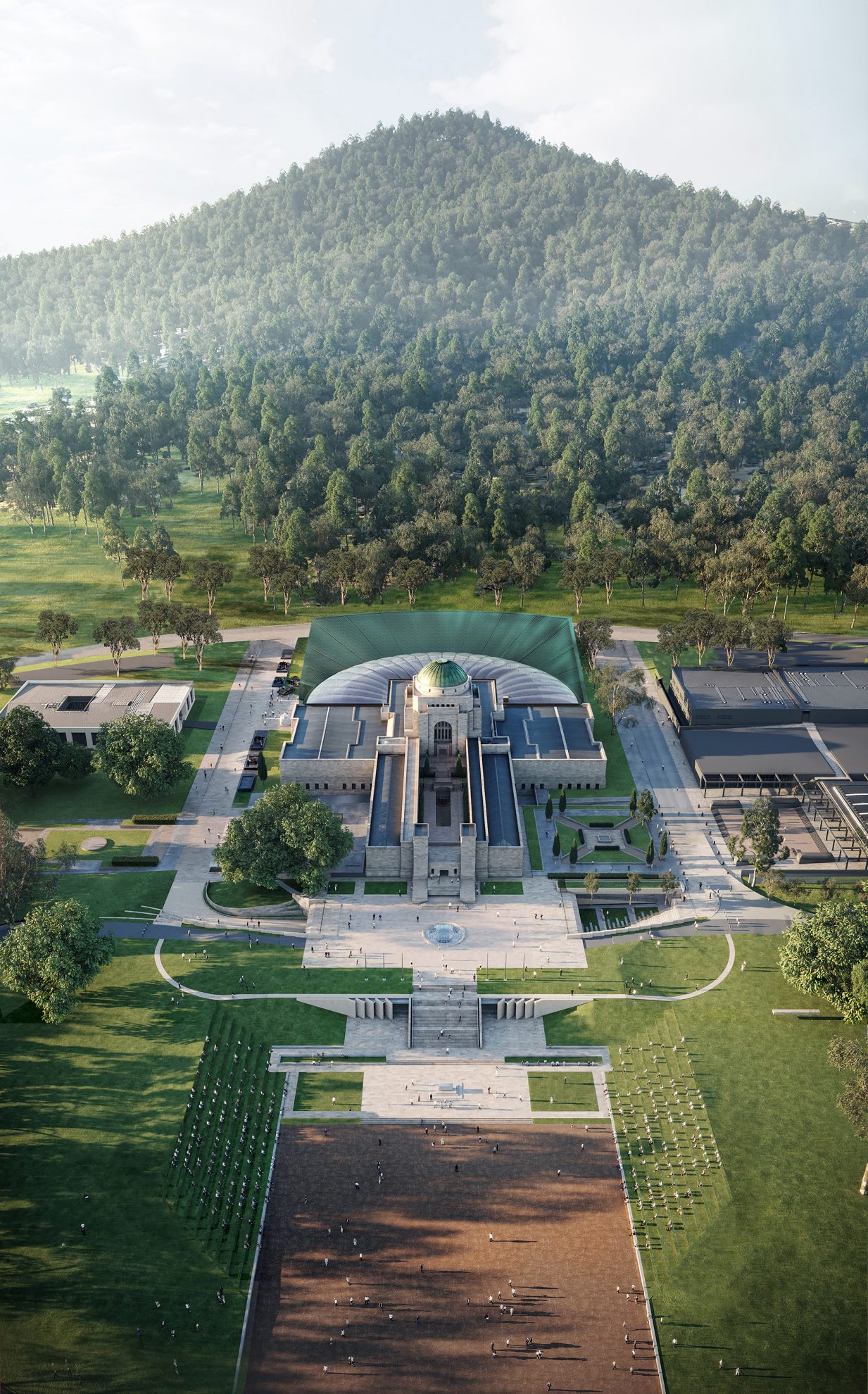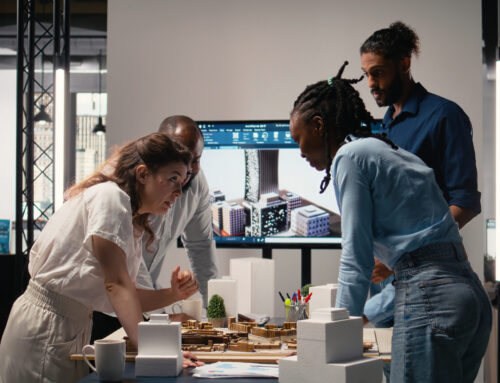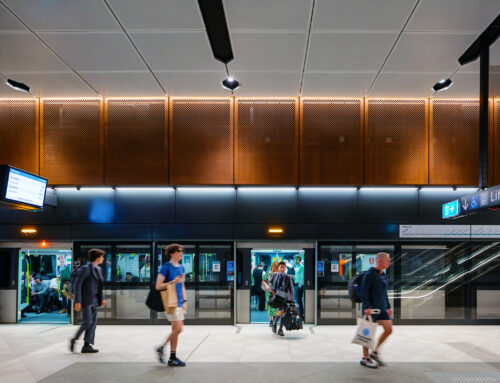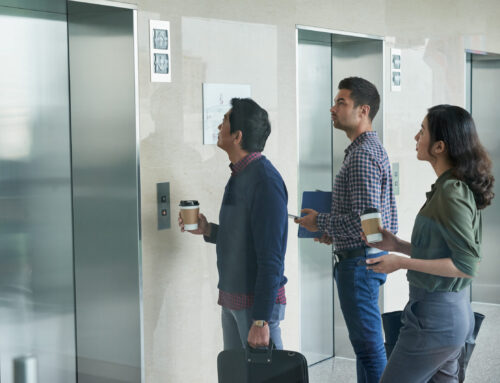The mechanics of closed loop geothermal energy
Geothermal energy harnesses the earth’s stable temperature to provide heating and cooling and typically generates around 40% in energy saving compared to a traditional system. AWM’s energy solution goes even further with a 105% improvement over a traditional system. The annual energy saving, in terms of CO2, is the equivalent of taking 88 buses off the road.
We understand this to be the first system in the world to use multiple large water source heat pumps and chillers with electromagnetic oil free bearing compressors in a geothermal application. The system provides a reliable and 100% renewable energy solution that uses air source heat pumps and is fully electrified.
Efficiency
A geothermal heating and cooling system is more efficient than a traditional air source heating and cooling system because it doesn’t use large fans to reject waste heat to the air. Instead, it uses water to transfer heat into the earth, using long loops of pipe that are sunk deep into the ground.
In cold weather, heat pumps are used to generate hot water that heats the buildings. (This is similar to a reverse-cycle air conditioner in a house.) However for the geothermal system, the waste energy is absorbed underground, carried down through the loop of pipes where the earth absorbs the waste energy. In warm weather, the system works the opposite way, cooling the building with chillers and rejecting the heat underground.
AWM’s closed loop system relies on 32 km of vertical boreholes, drilled as deep as 150 m, fitted with over 130 km of pipework to form an underground heat exhanger. This geothermal ground heat exchanger is the system that unlocks the high efficiencies of geothermal cooling and heating.
During periods of cold weather, most of the cooling requirements for the communications and specialist cold rooms will be satisfied by the waste energy from the water source heat pumps. The design of the system allows the waste heat to be recovered and avoid running cooling systems, simultaneously cooling and heating.
Scale
The heart of the mechanical system is a combination of large capacity chillers and water source heat pumps, a total of 7 machines with a combined 7,850 kW of refrigeration. Due to the significant capacities needed, conventional geothermal machines would have been unsuitable – the site would have needed 40.
We took an innovative approach using the latest technology of electromagnetic bearing and oil-free compressors, combined with ultra-low GWP refrigerant and customised machines. This allows the chillers and heat pumps to operate simultaneously with the geothermal ground loop in extreme ambient temperatures, ranging from -1°C to 39°C. In order to deal with such a wide range of temperatures, and avoid freezing, the geothermal pipework is filled with ethylene glycol.
Another important feature that makes the system work so effectively is that all the geothermal machines are set up in a centralised plant arrangement, within a central energy precinct, avoiding the distribution of hundreds of small geothermal units throughout the site. The centralised system also allows the 5 buildings connected on the site to share a common system and gain benefits from diversity in operation.
It’s the combination of these elements that make up Australia’s biggest geothermal system.
Operational continuity
Another innovation that we integrated into the design was the ability to reverse the operation of two of the machines. These specially customised units are designed to operate as either a chiller or a heat pump, but if there is a failure of any of the 7 machines then these units can be swapped to an alternate operation. This allows AWM to only install the required equipment that they need for normal operation, but still have a spare machine for redundancy in peak conditions. This avoids the significant cost of buying 2 dedicated standby machines that sit idle, while still having the surplus they need for their critical gallery space.
Why was this the right solution for the Australian War Memorial?
If you’ve ever been to the Australian War Memorial, you’ll know it’s located on the outskirts of Canberra’s CBD, in the foothills of Mount Ainslie. It’s an appropriate setting to pay your respects and honour the lives lost through war.
We were engaged to deliver consulting engineering services for its development and expansion. The project period was agreed at 9 years, culminating in a 2028 completion, and at a cost of AU$550 million. It will expand gallery spaces and modernise buildings on the site.
Project brief:
- Central energy plant bringing together mechanical, electrical, fire and hydraulic services
- New two-level Anzac Hall gallery, approximately 10,000 m²
- Subterranean southern entrance including theatre, event space and flexible gallery space
- Glazed link to connect the existing memorial building and the new two-level gallery
- Refurbishment of the existing heritage building including galleries and education spaces
- Refurbishment and extension of the Bean Research Centre
- Sitewide services and public realm refresh
- Project sustainability strategy.

Project considerations:
- With an 80-year heritage, the building needs sensitive and considered design. Visitors come to pay their respects, and any mechanical solution needs to be peaceful.
- The museum is AAA graded and holds precious historical artefacts. It needs heating and cooling at a constant temperature of 20-23°C and humidity of 45-55%.
- Some of the gallery areas are 12 metres high and surrounded by heritage stonework – a challenging space for temperature regulation.
- Our heating and cooling solution needed to work within the parameters of electrical design that’s already been approved. This demands a heating and cooling system that’s extremely efficient.
- Canberra has a net-zero electrical grid and is transitioning away from the use of fossil fuels. Any solution needed to be future-proofed.
The unique features of this geothermal energy
This geothermal energy system uses multiple electromagnetic bearings and oil-free compressors, which are usually only available in large capacity chillers. Since these chillers are some of the most efficient on the market and used in building projects that are looking for extremely efficient energy, we wanted to use them for this new type of application.
We worked with manufacturers to adapt a standard chiller to work with the extreme range of temperatures needed in the geothermal loop. We were also able to reverse their standard function and manufacture a bespoke water source heat pump to generate heating water – again operating with the extreme range of expected temperatures.
Normally a large geothermal system with a central plant uses relatively low-tech machines. Higher tech solutions are usually deployed on a smaller scale and less centralised. However, through creativity in mechanical engineering, we managed to develop a bespoke and highly sophisticated system that works with the centralised energy precinct.
We collaborated with GeoExchange Australia to design a ground heat exchanger that would work with the mechanical plant. The modelling of the ground loop performance was carefully matched with the proposed plant, adapting the operating temperatures to work within the limits of the machines. A key innovation was to use double loops in each borehole, which allowed greater performance from each borehole and higher water flow rates. This reduced the number of boreholes needed and allowed cooling towers to be connected at the end of the ground loop, for trim cooling.
How geothermal energy reduces carbon emissions
With rising gas prices, the global imperative to meet net zero carbon by 2050 and Canberra’s goals to transition away from fossil fuels by 2045, we need to look for ways to reduce carbon emissions. An excellent way to do this is to design heating and cooling solutions that are fully electrified.
The capital cost of geothermal can be high, but the payback is excellent. The plant itself only needs to be replaced after approximately 40 years as opposed to an air-cooled plant which is replaced after 10 years. This saves millions of dollars. Also, as heating and cooling comes from the earth’s stable temperature, energy bills are much lower than they would be under an air sourced system.
As the temperature of the earth that we tap into stays at around 17°C, the heating and cooling systems have a stable heat rejection base to work with, rather than the extremes ambient air reaches in peak summer and winter.
The Australian War Memorial is a nationally significant project with deep cultural significance. This collaboration between the Australian War Memorial development team, NDY and GeoExchange Australia is one that, at the time of writing, hasn’t been seen at such scale in the southern hemisphere. Using the latest technology, it will dramatically reduce the memorial’s energy costs and greenhouse gases by harnessing the ground’s temperature and thermal potential.

![AWM-0275-AFC-GE-R20 [B] AWM-0275-AFC-GE-R20 [B]](https://ndy.com/wp-content/uploads/2023/03/AWM-0275-AFC-GE-R20-B.jpg)











